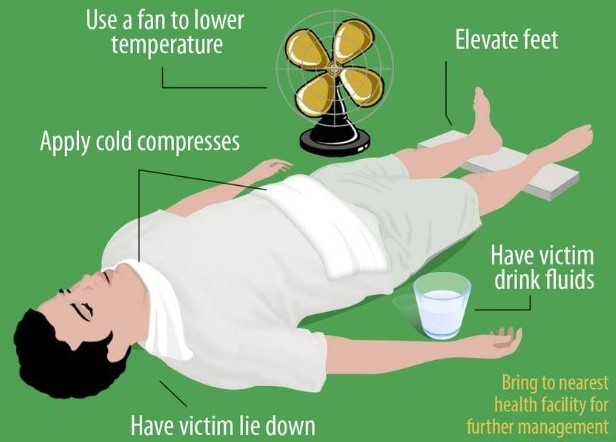
As summer temperatures continue to rise amid extreme weather conditions brought on by climate change, the risk of heat-related illnesses, such as heat exhaustion and heat stroke, increases.
The Department of Health (DOH) recently reported 118 cases of heat exhaustion among students in the Philippines due to the intense summer heat in March 2023. While no severe or critical cases have been reported, it’s essential to take preventative measures and stay protected from the heat.
This article will provide helpful tips and information on how to avoid heatstroke, a potentially life-threatening condition, and ensure a safe and enjoyable summer for you and your loved ones.
Understanding Heatstroke: Heatstroke is the most severe form of heat illness, occurring when the body overheats and cannot cool down due to dehydration and/or a humid environment. If not treated immediately, heat exhaustion can progress to heat stroke, which can be life-threatening. Symptoms include dizziness, nausea, headache, extreme thirst, rapid heartbeat, and even unconsciousness.
Preventing Heatstroke: To stay safe and avoid heatstroke during the hot summer months, follow these essential tips:
- Stay hydrated: Drink plenty of water throughout the day, especially when engaging in outdoor activities or exercising.
- Dress appropriately: Wear light, breathable clothing to help your body stay cool. Avoid dark colors, which can absorb more heat.
- Limit sun exposure: Avoid spending excessive time outdoors, particularly during peak sunlight hours. When outside, seek shade whenever possible.
- Wear sun protection: Use sunscreen with a high SPF, and wear wide-brimmed hats and sunglasses to protect your skin and eyes from the sun’s harmful rays.
- Take breaks: If you’re engaging in outdoor activities or exercise, take regular breaks to rest and cool down in the shade or an air-conditioned space.
- Monitor vulnerable individuals: Keep an eye on infants, the elderly, athletes, and those who work outside, as they are at a higher risk of heat-related illnesses.
- Know the signs: Be aware of the symptoms of heat exhaustion and heatstroke, and seek immediate medical attention if you or someone you know is experiencing these symptoms.
Skin Cancer Awareness: In addition to heat-related illnesses, the DOH has also recorded 2,700 cases of skin cancer among Filipinos from 2011 to 2021. Constant exposure to the sun can cause skin cancer, making it crucial to protect your skin and follow the sun protection tips listed above.
By staying informed and taking the necessary precautions, you can reduce the risk of heat stroke and other heat-related illnesses during the summer months. Remember to stay hydrated, wear appropriate clothing and sun protection, and be mindful of vulnerable individuals. Stay safe and enjoy a healthy, sun-smart summer!
The Philippine Space Agency says the country can rely on space data to guide climate change action. Meanwhile, a climate change education microsite has been made accessible to Filipino youth.
PLEASE SHARE THIS ARTICLE to help avoid heat-related illnesses and heat stroke this summer.
Good News Pilipinas is a Lasallian Scholarum Awardee. TELL US your good news story tips by messaging GoodNewsPilipinas.com on Facebook, Twitter, Instagram, or e-mail editor@goodnewspilipinas.com and WATCH Good News Pilipinas TV YouTube & Good News Pilipinas TikTok for more Filipino Pride stories!
The post How to Avoid Heatstroke: Tips for Staying Safe During Summer Heatwaves appeared first on Good News Pilipinas.
Source: Good News Pilipinas
0 Comments